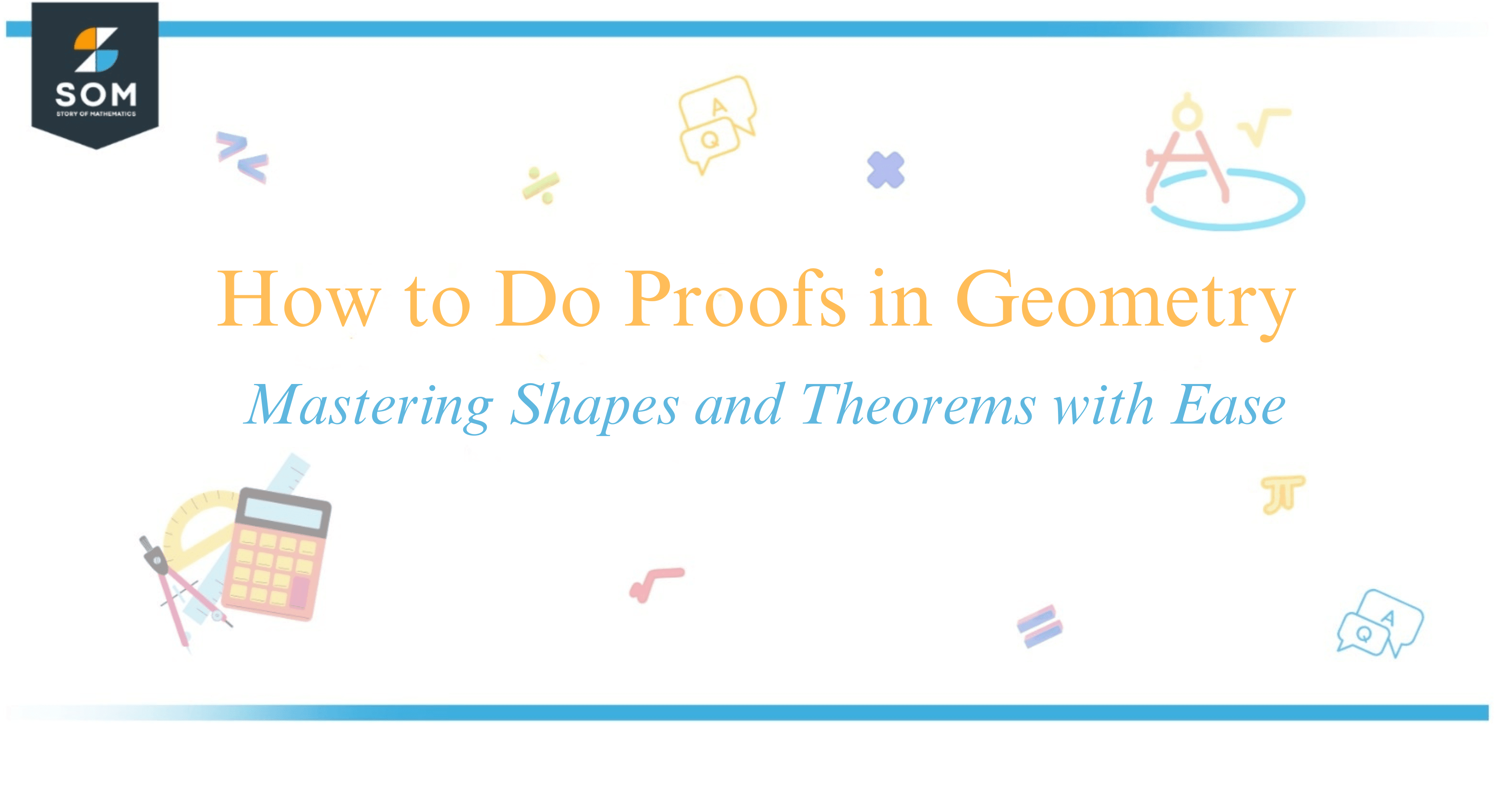JUMP TO TOPIC

To do proofs in geometry, I start by understanding the fundamental logic that forms the basis for all mathematical reasoning.
Geometry is the branch of mathematics that deals with the properties and relations of points, lines, angles, surfaces, and solids.
Proving a geometrical statement requires a set of logical steps that lead to a conclusion based on given, known facts and previously established theorems.
As someone keen to study or teach geometry, it’s essential to comprehend how to construct a logical sequence of statements to arrive at a geometric truth.

Proof in geometry often begins by identifying the information provided in a problem and gathering any relevant theorems or definitions that apply to the situation. It’s a meticulous process that involves presenting arguments systematically.
Using deductive reasoning, each step in the proof builds off the previous ones, ensuring there is a clear and direct line of thought from the initial assumptions to the final conclusion.
This practice not only solidifies my understanding of geometric concepts but also sharpens my analytical skills.
Crafting a convincing geometric proof is akin to putting together a puzzle where each piece must fit perfectly. I always remind myself to pay attention to detail and embrace the challenge; every proof solved is a new victory in the conquest of mathematical mastery.
Approaching Proofs in Geometry
When I start a geometry proof, my first step is always to understand the problem. I identify and list all the given information, such as angles, sides, and properties of triangles or parallel lines.

Getting a clear visual of the figure is crucial, so I often draw it out or refer to it frequently.
I use vocabulary like congruent, perpendicular, or similar as needed. The congruent triangles and the reflexive property can help me relate different parts of the figure. Here are some key elements to remember:
- Statements and reasons: Organize your proof with each statement supported by a reason.
- The Segment Addition Postulate ($AB + BC = AC$ if $B$ is between $A$ and $C$) and the Angle Addition Postulate are foundational tools.
The structure of the proof is also important. I may use a two-column proof, where one column lists statements and the other lists the reasons in parallel. Alternatively, I may use a paragraph proof, which combines statements and reasons into flowing text.
Here’s a simple framework of how I typically format:
| Statement | Reason |
|---|---|
| Given: | Given Information |
| To Prove: | Conclusion to be reached |
| Proof: | Logical sequence of statements linked by reasons |
My proofs rely on theorems and postulates such as the Angle Bisector Theorem or parallel lines creating congruent alternate interior angles. Recognizing patterns of congruent angles and congruent sides in isosceles triangles or parallelograms can also guide my reasoning.
Lastly, the concept of CPCTC (Corresponding Parts of Congruent Triangles are Congruent) often serves as a critical final link in proving parts of a triangle are congruent by first proving the triangles are congruent.
Remember, patience and practice are key in mastering geometry proofs. The path from problem to conclusion can be challenging but rewarding.
Advanced Proof Techniques
When tackling advanced geometry proofs, I incorporate a variety of strategies that account for similarity, algebra, angle congruence, and intuition. My approach allows me to systematically address complex problems.
Similarity and Congruence
I always begin by identifying any similar figures, which share the same shape but may differ in size, using the AA (Angle-Angle) postulate:
- AAA (Angle-Angle-Angle) is not sufficient for similarity because it doesn’t consider proportionality.
I then consider angle congruence and side ratios, setting up proportions like $\frac{AB}{A’B’} = \frac{BC}{B’C’}$ when figures ABC and A’B’C’ are similar.
Algebraic Techniques
Algebra is a powerful ally in geometry proofs. I make use of substitution and rearranging equations to isolate variables, employing properties like the Distributive Property $(a(b+c) = ab+ac)$ to simplify complex expressions.
| Step | Reason |
|---|---|
| Identify equations | Given, angle congruence |
| Substitute values | Algebra |
| Solve for unknowns | Algebra |
Intuition in Proofs
My intuition guides me toward relevant theorems and postulates. For instance, I know to consider the Pythagorean theorem when dealing with right triangles, recognizing when $a^2 + b^2 = c^2$ can be applied.
By integrating these techniques thoughtfully, I construct robust proofs that stand on a solid foundation of geometry principles.
Conclusion
In geometry, writing a solid proof is akin to presenting a persuasive argument; the goal is to show beyond doubt that a specific conclusion is true.
When I approach this final stage, my focus is on ensuring that every step from my premises to my ultimate claim is backed by rigorous logic and mathematical principles.
Firstly, I like to make a checklist to verify that my proof includes all necessary components. Do I have my givens? Are my theorems and definitions accurately applied?
Did I ensure that every statement in my proof is justified, either by a given, definition, a postulate, or a previously proven theorem? These questions are crucial checkpoints before finalizing my argument.
To illustrate, if my goal is to prove that two lines are parallel, I need to demonstrate that, given a transversal, alternate interior angles are equal; this relies on the Alternate Interior Angles Theorem which asserts that if $ \angle A \cong \angle B $, then line $ l_1 \parallel l_2 $.
In essence, the conclusion of a geometric proof is the culmination of careful analysis and logical reasoning. It ties back to the initial givens and follows through each statement methodically until the final assertion is made.
To be effective, the proof should lead the reader seamlessly through my thought process, leaving no gaps or ambiguities. Ultimately, in a successful geometry proof, every claim is substantiated, and the conclusion resonates with certainty and clarity.
